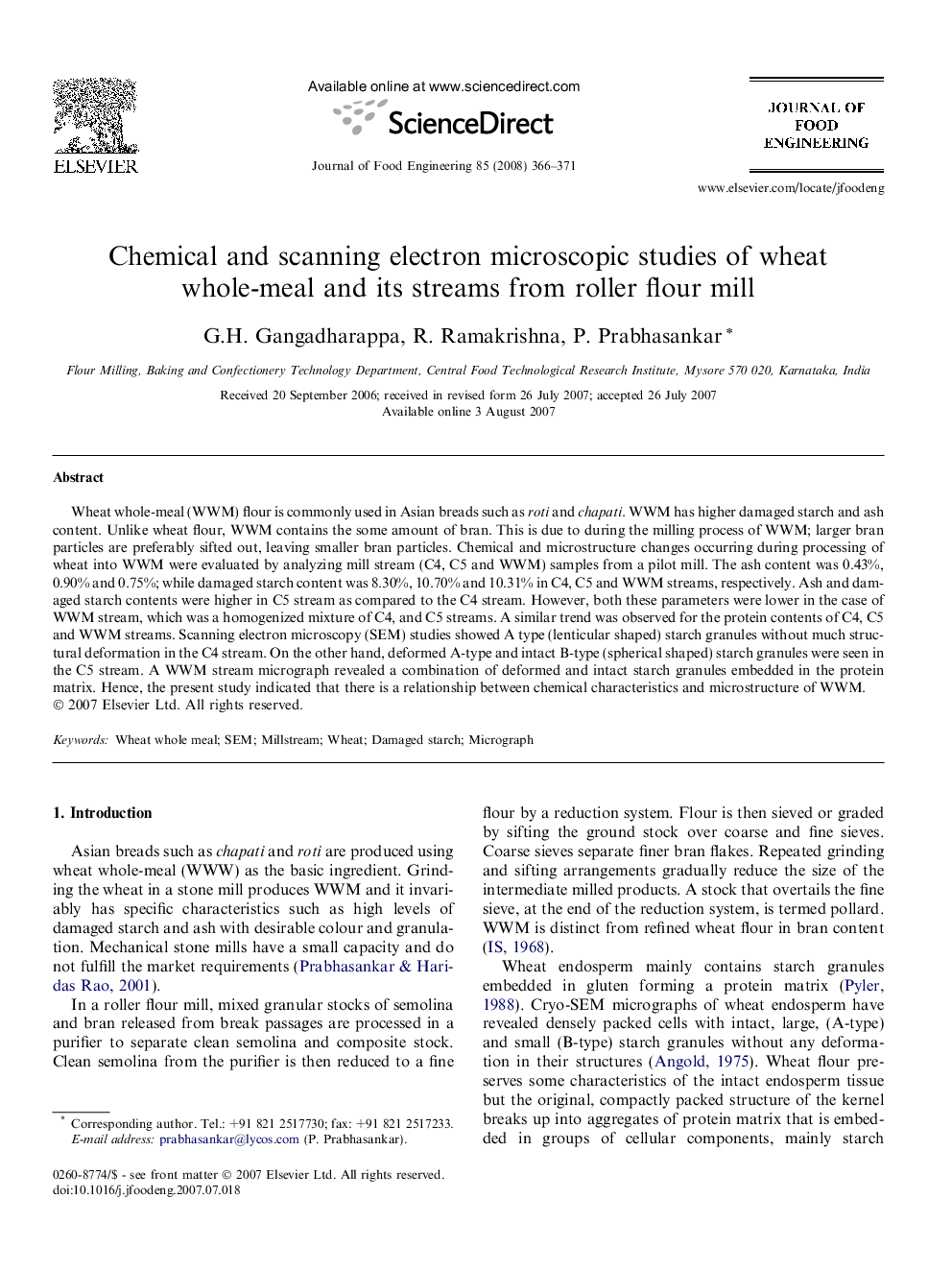| Article ID | Journal | Published Year | Pages | File Type |
|---|---|---|---|---|
| 225446 | Journal of Food Engineering | 2008 | 6 Pages |
Wheat whole-meal (WWM) flour is commonly used in Asian breads such as roti and chapati. WWM has higher damaged starch and ash content. Unlike wheat flour, WWM contains the some amount of bran. This is due to during the milling process of WWM; larger bran particles are preferably sifted out, leaving smaller bran particles. Chemical and microstructure changes occurring during processing of wheat into WWM were evaluated by analyzing mill stream (C4, C5 and WWM) samples from a pilot mill. The ash content was 0.43%, 0.90% and 0.75%; while damaged starch content was 8.30%, 10.70% and 10.31% in C4, C5 and WWM streams, respectively. Ash and damaged starch contents were higher in C5 stream as compared to the C4 stream. However, both these parameters were lower in the case of WWM stream, which was a homogenized mixture of C4, and C5 streams. A similar trend was observed for the protein contents of C4, C5 and WWM streams. Scanning electron microscopy (SEM) studies showed A type (lenticular shaped) starch granules without much structural deformation in the C4 stream. On the other hand, deformed A-type and intact B-type (spherical shaped) starch granules were seen in the C5 stream. A WWM stream micrograph revealed a combination of deformed and intact starch granules embedded in the protein matrix. Hence, the present study indicated that there is a relationship between chemical characteristics and microstructure of WWM.
